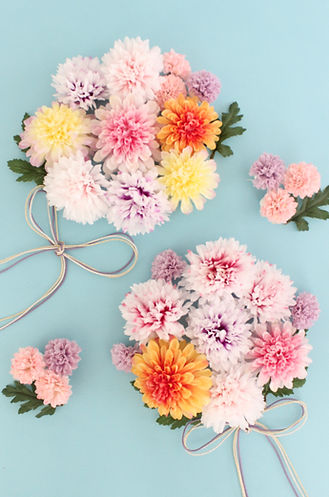JAPANESE FLORAL PATTERNS BRINGING
GOOD FORTUNE
TIMELESS BEAUTY







The BEAUTY of PATTERNS
The traditional patterns adorning Japanese crafts and kimonos have long been cherished, each imbued with heartfelt wishes for happiness.
In the late 19th century, Japonisme—the European fascination with Japanese aesthetics, particularly ukiyo-e—spread across the continent, especially in France, leaving a lasting impact on the world of art. Since then, Japanese motifs, especially floral ones, have profoundly influenced European decorative design.
Their flat, stylized compositions convey a striking visual presence, reminiscent of modern flat-lay photography, and reflect a direct, loving gaze toward flowers.
Crossing oceans and transcending time, these floral patterns remind us of the enduring human desire to cherish beauty and hold onto pure, heartfelt hopes. Here, we share a few examples of floral patterns that express this timeless spirit.
CHRYSANTHEMUM and MEDICINE BALL PATTERN
KIKUMON (Chrysanthemum Pattern): Prayers for Longevity, Rejuvenation, and Good Health
Since ancient times, chrysanthemums have been believed to possess medicinal powers that promote longevity. Celebrated for their elegant shape, vibrant color, and delicate fragrance, they gained popularity across Europe—especially in France—after the rise of Japonisme in the 1890s, influencing fashion and decorative arts.
KUSUDAMAMON (Medicine Ball Pattern): Protection from Illness and Wishes for Wellbeing
Traditionally, it was believed that hanging a kusudama (medicine ball) on pillars would ward off evil and preserve health. Today, its endearing form often appears on children's ceremonial attire, such as the obi sashes worn for Shichi-Go-San celebrations.


NARCISSUS
and FLORAL CIRCLE
PATTERN
SUISENMON (Narcissus Pattern): Wishes for Success and Mastery of the Arts
The narcissus is considered an auspicious flower, symbolically associated with immortals or sages, and is thought to bring good fortune in rising through life and excelling in one’s craft.
HANAMARUMON (Floral Circle Pattern): Eternal Happiness and Meaningful Connections
Hanamarumon is a circular pattern formed from flowers, leaves, and branches. The round shape symbolizes everlasting happiness, and is also said to represent the bonds of meaningful relationships—drawing from the wordplay on “en” (縁), meaning both “circle” and “connection” in Japanese.
WISTERIA
and FAN PATTERN
FUJIMON (Wisteria Pattern): Wishes for Bountiful Harvest
The drooping appearance of wisteria flowers is reminiscent of heavily laden rice ears, making it a symbol of abundance and prosperity.
OUGIMON (Fan Pattern): Wishes for Prosperity and Good Fortune
The fan, when opened, spreads out widely, leading to its association with good fortune and earning it the name "Suehirogari-mon" (literally, "spreading out towards the end" pattern). It has also been said that fanning with a fan invites good fortune and wards off evil. A fan adorned with flowers is sometimes called Hanaoogi-mon (Flower Fan Pattern).


.jpg)

TIMELESS
Japanese floral patterns—admired by artists and maisons around the world and serving as a rich source of inspiration for new creations—continue to shine with timeless beauty and charm, both in their design and the meanings they convey.

